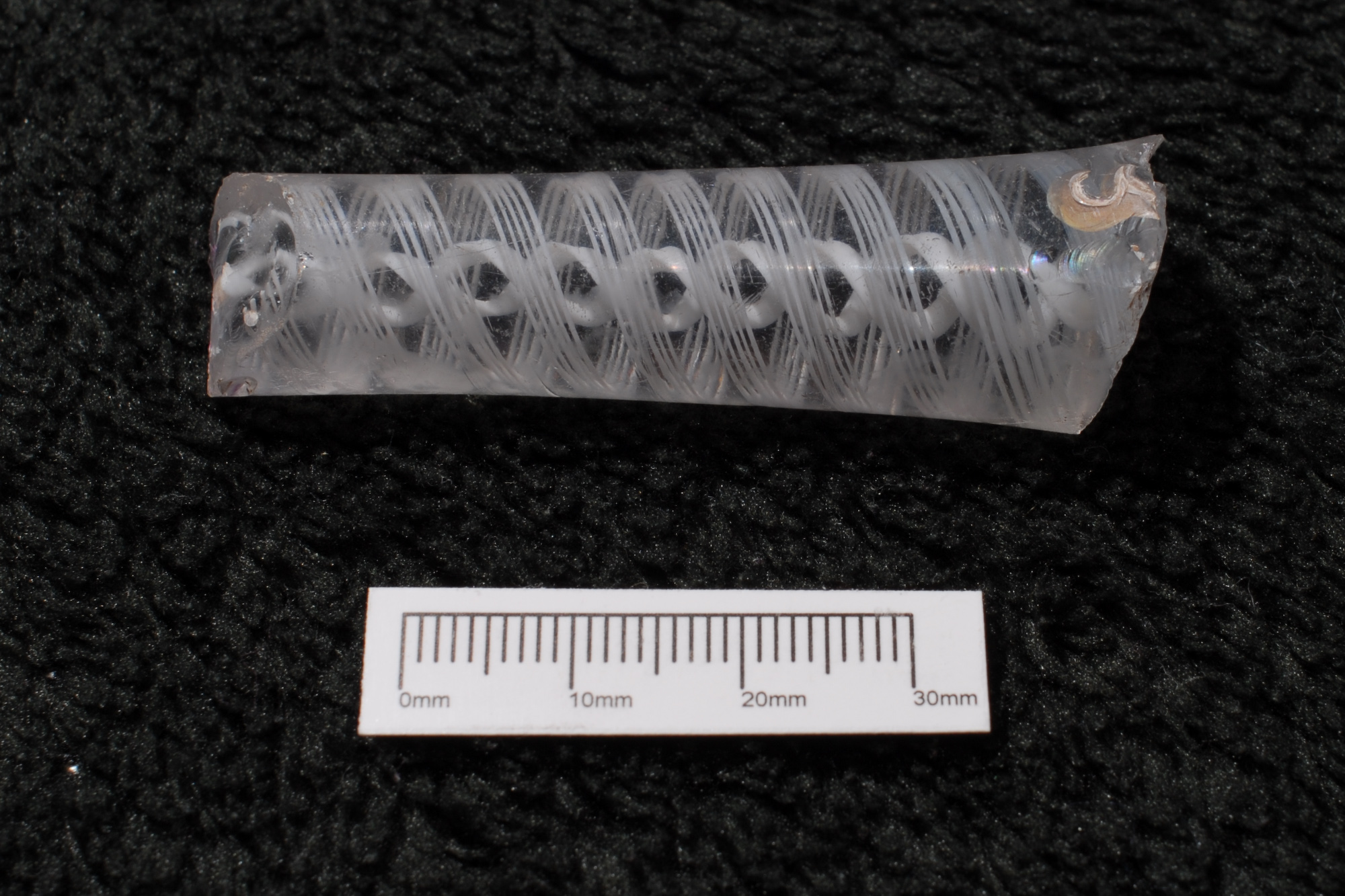Glass Stem fragment

As part of our ‘Virtual Museum‘ here’s artefact number 4. Find Number 09E504:002 (pictured above) was retrieved from a brown silty sand layer overlying the wheel pit floor in a mill building we recently excavated in Clonmel, Co. Tipperary. This decorative piece of glassware recovered from a secure early context was found in association with a King George III halfpenny circa 1770. Both these finds are significant in providing a date for the operation of the mill. The glass fragments shape and design are particularly distinctive and belong to a style know as air twist glassware that was very fashionable in the mid 18th century. Audrey Whitty of the National museum identified the fragment as the stem of a cordial or wine glass possibly of English origin dating generally to the 1760’s.
English glass-makers developed the air twist during the 1730s and further developed it in the 1740s using opaque white enamel twisted rods. The air twists were made by incorporating bubbles of air into a mass of hot glass, which is then quickly twisted and pulled, the elongated bubbles thus forming corkscrew air lines inside the stem. Many varieties of air twists were created and used in straight-stemmed glasses, as well as in glasses with knops. By the mid-18th century the air twist was overtaken in popularity by glasses with an opaque twist stem that allowed clearer definition in the design. Instead of manipulating the air bubble, glassmakers placed rods of white enamel around the inside of a cylindrical mold. The mold was then filled with molten glass, which, after cooling and reheating, could be twisted to create “cotton twists” of elaborate design. The find retrieved from Raheen mill belongs to this type and can be described as a four ply thread twist around a double-series white opaque twist centre. A plain glass base fragment (Find No: 09E504:003) was found in close proximity to the stem and may well have belonged to the same piece.
This entry was posted on Friday, March 12th, 2010 at 12:06 pm. It is filed under About Archaeology, Finds and tagged with Georgian wineglass, glass stem, Glass Stem fragment, glassmaking.
You can follow any responses to this entry through the RSS 2.0 feed.




[…] Some of the principle finds from the excavation at Raheen Mill can be viewed on the blog here and here. […]
[…] Some of the principle finds from the excavation at Raheen Mill can be viewed on the blog here and here. […]
Do you have a name or ownership details for the mill. We are unaware of a glass house in Clonmel. Your dating is consistent. This is however an “opaque” twist, not an air twist
Alex
http://www.scottishantiquesinc.co.uk